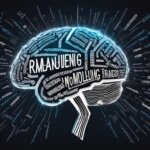Table of Contents
BERT, which stands for Bidirectional Encoder Representations from Transformers, is Google AI Language’s open-source machine learning framework for natural language processing (NLP). Designed to enhance computers’ understanding of ambiguous language in text, BERT utilizes surrounding text to establish context. This language model was pre-trained on Wikipedia text data and can be fine-tuned with question and answer datasets, making it a powerful tool for NLP tasks.
In this article, we will delve into the importance of BERT in NLP and explore how it works. Additionally, we’ll discuss its various applications and the impact it has on Google Search. We’ll also touch on future developments and variants of BERT, showcasing the potential of this groundbreaking technology.
The Importance of BERT in NLP
Before BERT, language models primarily used recurrent neural networks (RNN) and convolutional neural networks (CNN) for NLP tasks. However, these models had limitations in understanding context and polysemous words. BERT introduced the use of bidirectional training and Transformers, which allow it to read text in both directions simultaneously. This enables BERT to have a deeper sense of language context and improve its understanding of human language. BERT’s ability to address ambiguity in language makes it a significant advancement in the field of NLP.
BERT and Language Models
Prior to BERT, language models in NLP heavily relied on recurrent neural networks (RNN) and convolutional neural networks (CNN) to process and understand text. While these models were groundbreaking at the time, they had inherent limitations that hindered their ability to comprehend language nuances.
One major drawback was their inability to grasp contextual dependencies and polysemous words effectively. For instance, the word “bank” can refer to a financial institution or the edge of a river, and traditional language models struggled to discern the correct meaning based on context alone.
However, BERT revolutionized the field by introducing two essential components: bidirectional training and Transformers.
Bidirectional Training
Unlike previous models that processed text in one direction only, BERT can read and understand text bidirectionally. It considers the entire context, including both preceding and succeeding words, allowing for a comprehensive understanding of language.
This bidirectional approach enables BERT to capture the intricate relationships between words and phrases in a sentence. By considering the full context, BERT gains a deeper sense of language semantics and can better interpret the meaning of ambiguous or polysemous words.
Transformers: Transforming NLP
Furthermore, BERT leverages the power of Transformers, which are deep learning models specifically designed for sequence tasks like NLP. Transformers excel at capturing long-range dependencies and learning contextual relationships between words.
With Transformer-based architecture, BERT processes the entire sequence of words simultaneously, rather than sequentially. This parallel processing enables BERT to develop a comprehensive understanding of language context, improving its ability to perform various NLP tasks.
BERT’s introduction of bidirectional training and the use of Transformers has significantly advanced NLP capabilities. It has expanded the possibilities of language modeling, addressing previous limitations and opening doors to more accurate and precise natural language processing.
How BERT Works
BERT, or Bidirectional Encoder Representations from Transformers, operates by training on vast amounts of unlabeled text data using two key tasks: Masked Language Modeling (MLM) and Next Sentence Prediction (NSP). These tasks enable BERT to acquire a comprehensive understanding of language context and relationships between sentences.
Masked Language Modeling (MLM) involves masking a word within a sentence and tasking BERT with predicting the masked word based on the surrounding context. By learning to predict the missing word, BERT develops a robust understanding of semantics and word embeddings, enabling it to fill in gaps of ambiguous or incomplete sentences.
Next Sentence Prediction (NSP) aids BERT in comprehending the relationship between two consecutive sentences. BERT is trained to determine whether the second sentence follows logically from the first or if there is a discontinuity. This provides BERT with a deeper understanding of semantic connections and enhances its ability to grasp the meaning and intent behind longer texts.
BERT’s transformer-based architecture allows for efficiently processing entire sequences of words at once. Its attention mechanisms capture the contextual relations between words, improving its comprehension of complex language structures and nuances.

By training BERT using MLM and NSP, the model effectively learns to embed words in a multidimensional space known as word embeddings. These embeddings represent the meaningful relationships between words, allowing BERT to understand word similarities, antonyms, and other semantic nuances. This capability makes BERT a powerful tool for various natural language processing tasks.
Applications of BERT
BERT, an exceptional natural language processing tool developed by Google AI Language, has a diverse range of applications. Its proficiency in understanding the contextual meaning of language makes it highly suitable for various tasks in the field of NLP. Let’s explore some of the key applications of BERT:
1. Question Answering
BERT excels in question answering tasks by accurately identifying and marking the answer within a given text sequence. Its ability to comprehend the context of a question and search for relevant information allows it to provide precise and informative responses.
2. Sentiment Analysis
BERT’s deep understanding of language context makes it an effective tool for sentiment analysis. It can accurately assess the sentiment expressed in text, whether it is positive, negative, or neutral, leading to valuable insights for businesses and organizations.
3. Natural Language Inference
BERT’s advanced capabilities enable it to perform natural language inference tasks with remarkable accuracy. It can determine the logical relationship between two sentences, such as whether one entails or contradicts the other, providing valuable insights for tasks such as textual entailment and paraphrase detection.
4. Word Sense Disambiguation
With its deep understanding of contextual meaning, BERT can effectively disambiguate words with multiple meanings. This ability is crucial in tasks like word sense disambiguation, where it is essential to discern the intended meaning of a word based on its surrounding context.
5. Named Entity Recognition
BERT’s contextual understanding also makes it highly skilled in named entity recognition. It can accurately identify and classify named entities such as names, organizations, locations, and other proper nouns in text, providing valuable insights for various applications.
“BERT’s proficiency in addressing ambiguity and understanding context sets it apart as a versatile tool for various natural language processing tasks.”
These are just a few examples of how BERT can be applied in real-world scenarios. Its ability to grasp the nuances of language and comprehend meaning in context allows it to provide valuable insights and improve the accuracy of NLP systems.
Impact of BERT on Google Search
Google has incorporated BERT into its search algorithms, greatly influencing approximately 10% of search queries. With the implementation of BERT, Google aims to enhance the user experience by comprehending the context and intent behind search queries. By understanding the nuances of language, BERT allows Google to present more relevant search results, improving the accuracy and effectiveness of search outcomes.
Unlike previous search algorithms, BERT helps Google interpret search queries by considering the entire context and meaning of a user’s words. This enables Google to deliver search results that align more closely with the user’s intent, providing a more natural and refined search experience.
For example, let’s say a user searches for “top restaurants in London with a view”. Prior to BERT, search algorithms might have primarily focused on the keywords “restaurants” and “London”. However, BERT understands the importance of the phrase “with a view” and can better match the user’s query with relevant search results that emphasize scenic dining experiences.
The Impact on User Experience
BERT’s integration into Google Search has a significant impact on the user experience. By comprehending the context and subtleties of language, BERT helps deliver more precise search outcomes that align with the user’s intent. This means users are more likely to find the information they seek faster and with greater accuracy.
It’s important to note that optimizing content specifically for BERT is not recommended. Instead, organizations should focus on creating valuable and relevant information that caters to user needs, ensuring content aligns with the natural language patterns of search queries. By prioritizing user experience and providing high-quality content, websites can enhance their visibility and demonstrate their expertise in the search results generated by BERT.
With BERT’s ability to understand context and interpret user intent, Google’s search algorithms take a significant leap forward in delivering more precise and relevant search results. This allows users to experience a more refined search journey, where their queries are better understood, leading to greater satisfaction with the search outcomes.
Future Developments and Variants of BERT
BERT being open source has led to the development of various specialized models and variants. Two notable examples are TinyBERT and DistilBERT, which are smaller and more efficient versions of BERT, while still delivering comparable performance. These models have gained popularity due to their ability to reduce computational resources required during training and inference without compromising accuracy.
Additionally, there are other specialized models that have been fine-tuned for specific tasks. For instance, patentBERT has been tailored for patent classification, allowing for more accurate categorization and analysis of patent documents. Similarly, docBERT specializes in document classification, improving document sorting and retrieval. Furthermore, bioBERT has been customized for biomedical language representation, aiding researchers in understanding complex medical texts and facilitating advancements in the field of healthcare.
The versatility of BERT and its potential to enhance AI systems across various domains make it an exciting area of research and development. As the field of natural language processing continues to evolve, we can expect to see more innovative applications and models being created. With the ongoing advancements in specialized models, we are moving closer to achieving even higher levels of language understanding and contextual comprehension in AI systems.
FAQ
What is BERT?
BERT is an open source machine learning framework for natural language processing (NLP) developed by Google AI Language. It stands for Bidirectional Encoder Representations from Transformers and is designed to help computers understand the meaning of ambiguous language in text by using surrounding text to establish context.
How does BERT improve understanding of language?
BERT introduced the use of bidirectional training and Transformers, allowing it to read text in both directions simultaneously. This enables BERT to have a deeper sense of language context, addressing ambiguity and polysemous words more effectively.
What tasks can BERT be used for in NLP?
BERT has a wide range of applications in NLP, such as question answering, sentiment analysis, natural language inference, word sense disambiguation, and named entity recognition.
How does BERT work?
BERT is trained on large amounts of unlabeled text data using the Masked Language Modeling (MLM) and Next Sentence Prediction (NSP) tasks. In MLM, a word is masked, and BERT predicts the masked word based on context. NSP helps BERT understand the relationship between two sentences by predicting if the second sentence follows the first one.
How does BERT impact Google Search?
Google has incorporated BERT into its search algorithms to provide a more natural-feeling search experience. By understanding the context and intent of user queries, BERT helps Google better surface relevant results and improve the accuracy of search outcomes.
Are there any future developments or variants of BERT?
Yes, there are specialized models and variants of BERT, such as TinyBERT and DistilBERT, which are smaller and more efficient versions with comparable performance. Other models like patentBERT, docBERT, and bioBERT have been fine-tuned for specific tasks in various domains.













